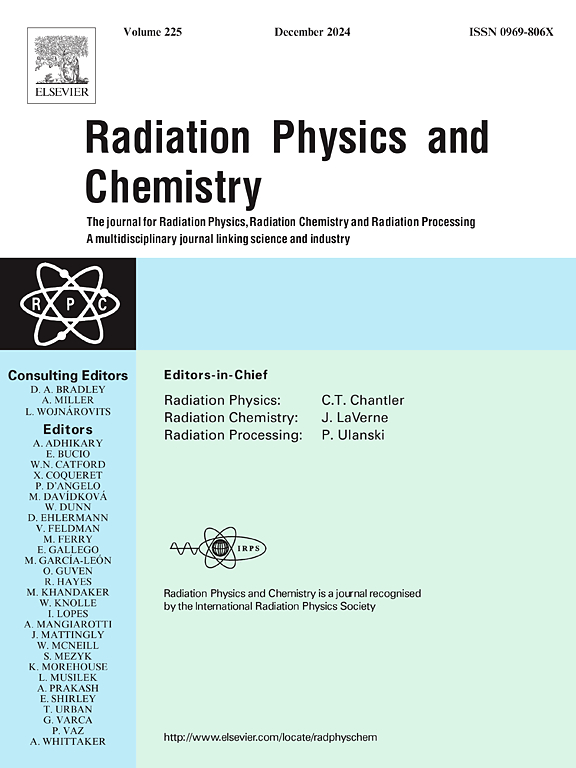Comparative analysis of proton depth dose distribution in the Snyder head phantom: FLUKA vs GEANT4 physics models
IF 2.8
3区 物理与天体物理
Q3 CHEMISTRY, PHYSICAL
引用次数: 0
Abstract
Today, estimating ionizing radiation doses through simulations using Monte Carlo codes is essential in many fields, particularly space radiobiology. Simulations are engaging because they are risk-free and significantly more cost-effective than experimental methods. Consequently, various codes have been developed to transport a broad spectrum of charged and uncharged particles across an extensive energy range from several keV to hundreds of TeV and beyond. These codes have diverse physical models, enabling users to select the most appropriate one for their simulations. Assessing the differences between these models is crucial for accurately estimating radiation doses. In this study, three different physical models from GEANT4 11.1.3 (FTFP_BERT, FTFP_INCLXX, and FTF_BIC) and the physical model of FLUKA 4–4.0 were evaluated to determine the depth dose distribution of protons (0.1 GeV–10 GeV) within the Snyder head phantom. The findings reveal that varying physical models yield different dose values. The paper thoroughly investigates the relative differences in the results obtained from FLUKA and GEANT4, expressed as percentages.
求助全文
约1分钟内获得全文
求助全文
来源期刊

Radiation Physics and Chemistry
化学-核科学技术
CiteScore
5.60
自引率
17.20%
发文量
574
审稿时长
12 weeks
期刊介绍:
Radiation Physics and Chemistry is a multidisciplinary journal that provides a medium for publication of substantial and original papers, reviews, and short communications which focus on research and developments involving ionizing radiation in radiation physics, radiation chemistry and radiation processing.
The journal aims to publish papers with significance to an international audience, containing substantial novelty and scientific impact. The Editors reserve the rights to reject, with or without external review, papers that do not meet these criteria. This could include papers that are very similar to previous publications, only with changed target substrates, employed materials, analyzed sites and experimental methods, report results without presenting new insights and/or hypothesis testing, or do not focus on the radiation effects.
 求助内容:
求助内容: 应助结果提醒方式:
应助结果提醒方式:


